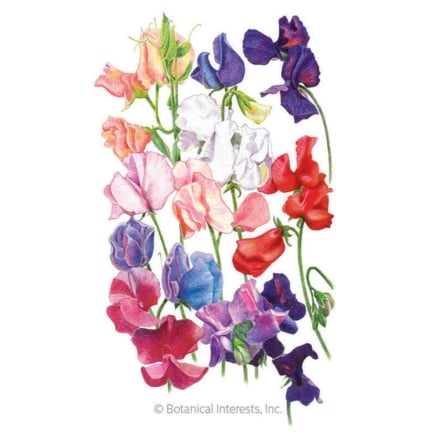Daintily meandering on a trellis, reaching to the sky, sweet peas are shining stars of the cool-weather garden. Their generously ruffled and fragrant flowers are perfection in floral arrangements, and their long, slender stems make them perfect for the cut flower garden.
Whether you grow them for cutting or prefer to leave them in the garden, these vines have a touch of magic. Their surprising cold tolerance makes them perfect for growing through the winter in warm climates, and in cold climates, they are ideal for the early spring garden.
Elegance Blend Sweet Pea Seeds
- Elegant, colorful, long-stemmed flowers
- Mildly scented, perfect for bouquets
- Ideal for mild climate growing
- Flowers in winter and spring
- Excellent for fall sowing or greenhouse
‘Winter Elegance’ Sweet Pea Overview
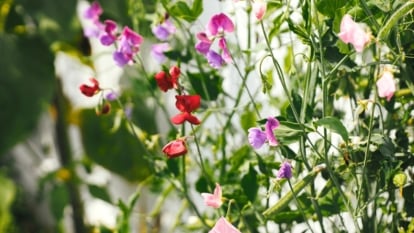
|
|
|
What Is It?
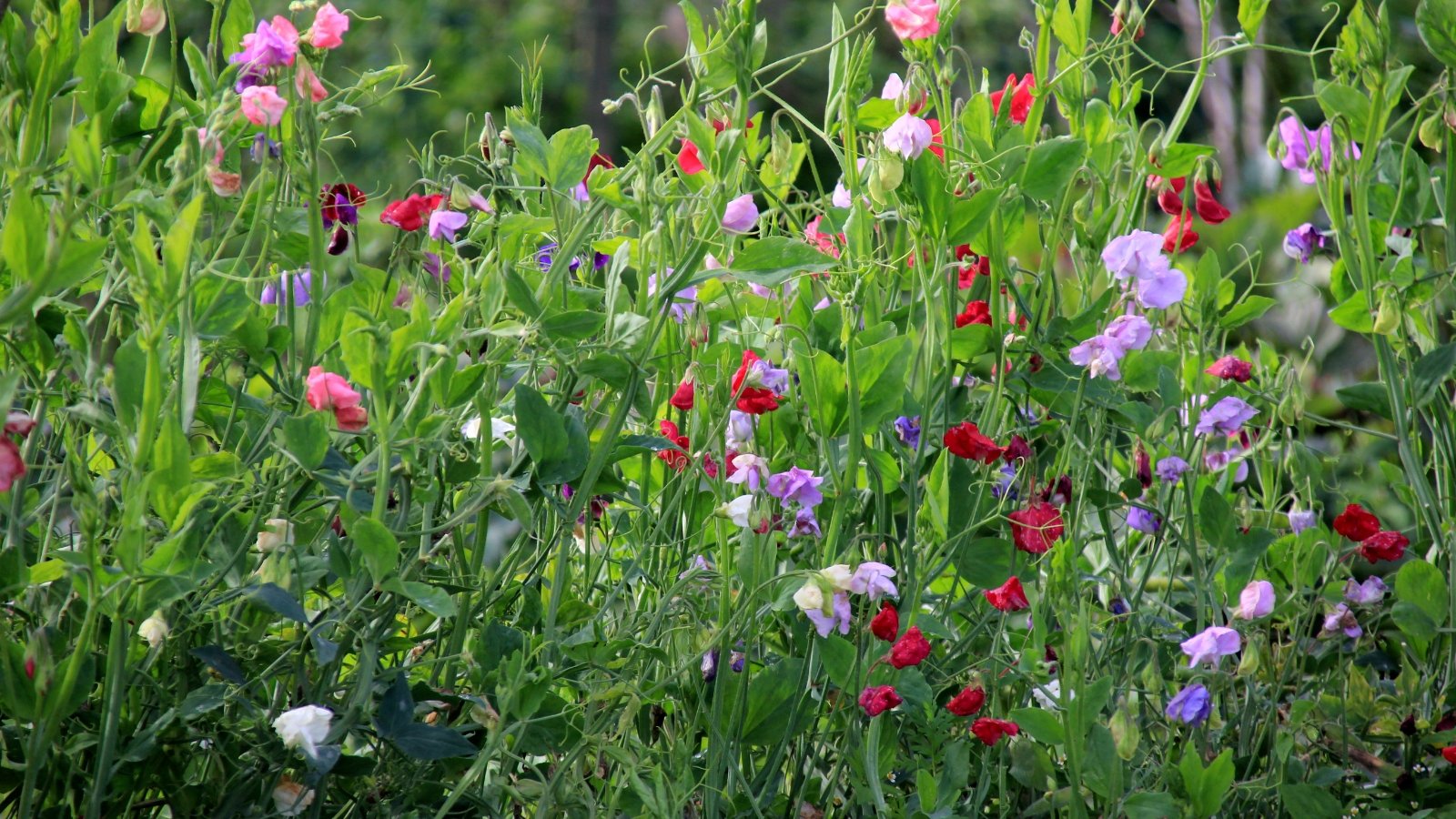
Sweet peas have long been a favorite of gardeners when it comes to sharing and hybridization. In part, this is due to the ease with which you can cross-pollinate them, In addition to their exceptionally nice fragrance and overall beauty among plants. Their cool weather growth habit and frost tolerance make them surprisingly sturdy in spite of their delicate appearance. ‘Winter Elegance’ is a delightful series of many colored beauties.
Characteristics
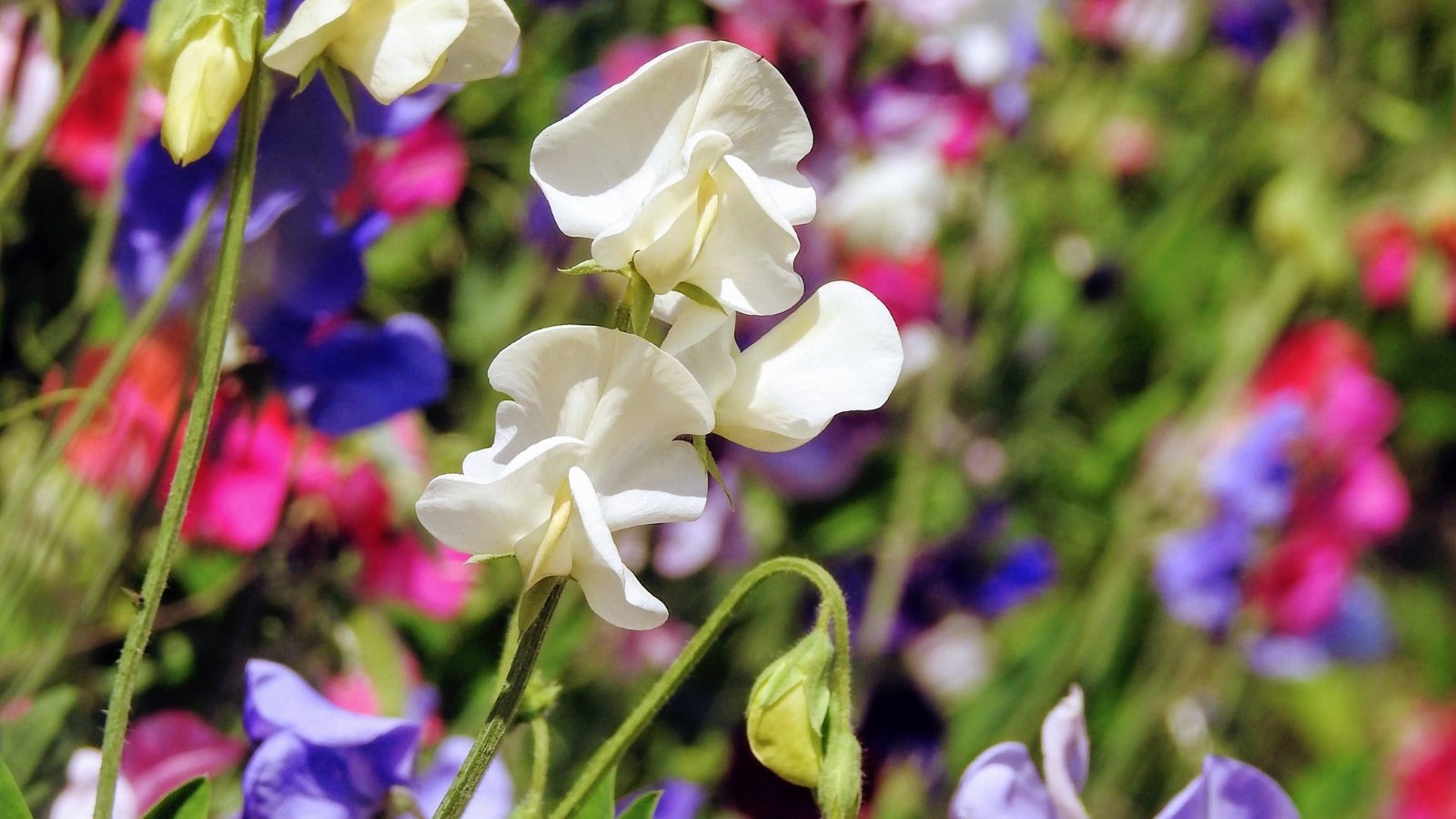
Sweet peas are annual vining plants that love a place to climb. They love cold weather, germinating best in the range of 55-65°F (13-18°C). Between 35-55°F (2-13°C) is where they do their best growing, making them excellent for fall sowing in warm climates.
There is no need to worry about the occasional dip below freezing. The vines, especially when they are young, can tolerate quite a bit. They will survive brief dips in the 20s (-7°C).
‘Winter Elegance’ is a wonderful series for the cut flower garden. These varieties have a gentle, pleasant fragrance and considerably long stems. They perform well in areas with mild winters.
This series comes in several colors, including white, purple, pink, apricot, and even red and blue. By planting a blend, you can harvest a wide range of shades from this group. They are early bloomers, with lightly ruffled petals on blooms of considerable size.
Native Area
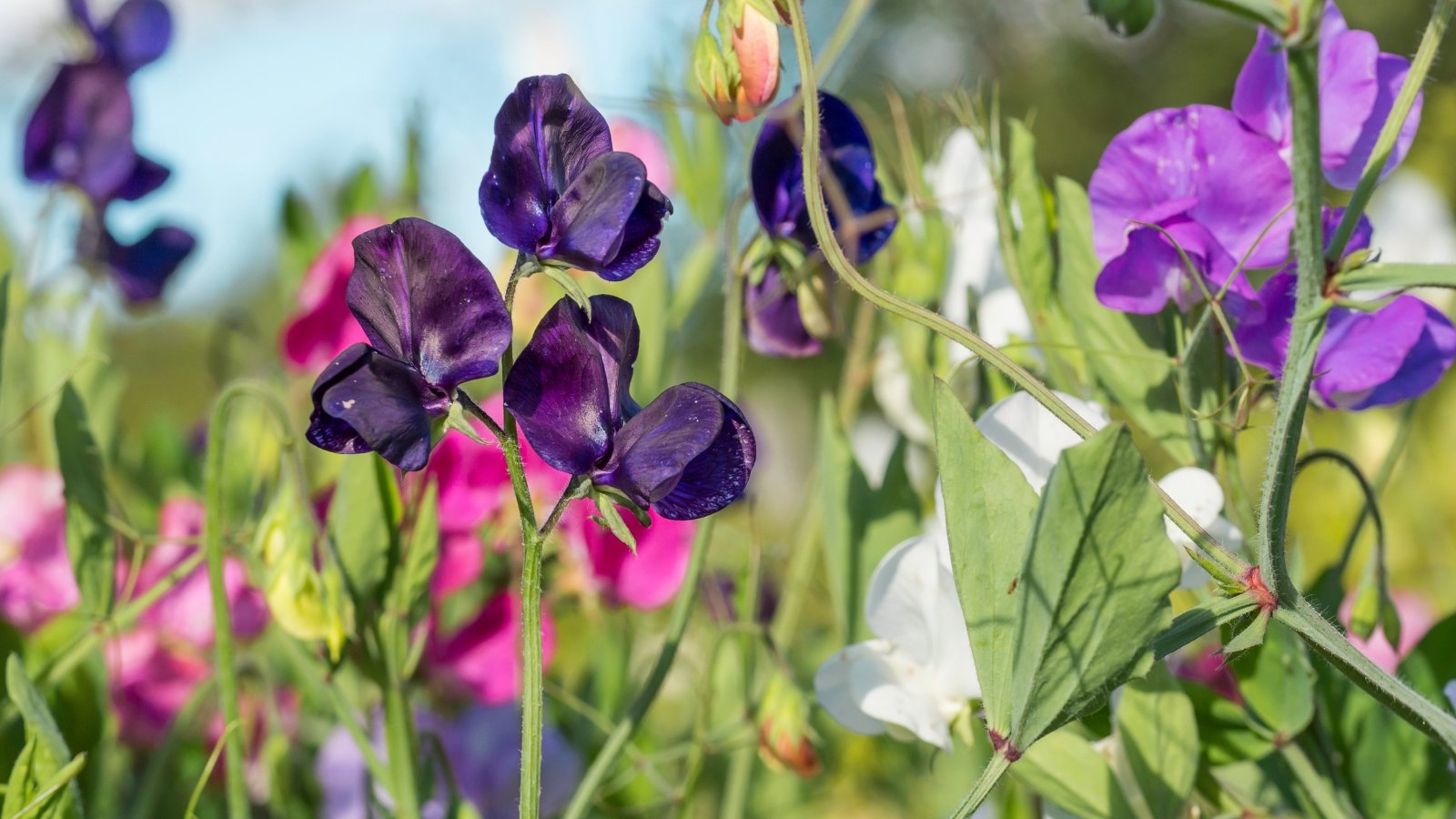
Though other types exist, Lathyrus odoratus is the most commonly used in the flower garden. It is native to Southern Italy, specifically the island of Sicily. There, it was first recorded by a Franciscan monk named Francisco Cupani in 1695.
These plants are accustomed to the mild winters of the Mediterranean region. Typically considered spring and early summer bloomers, it is likely that they originally bloomed in winter and early spring in their native range. This area experiences cool, wet winters and hot, dry summers. Sweet peas prefer cool, moist weather.
Planting
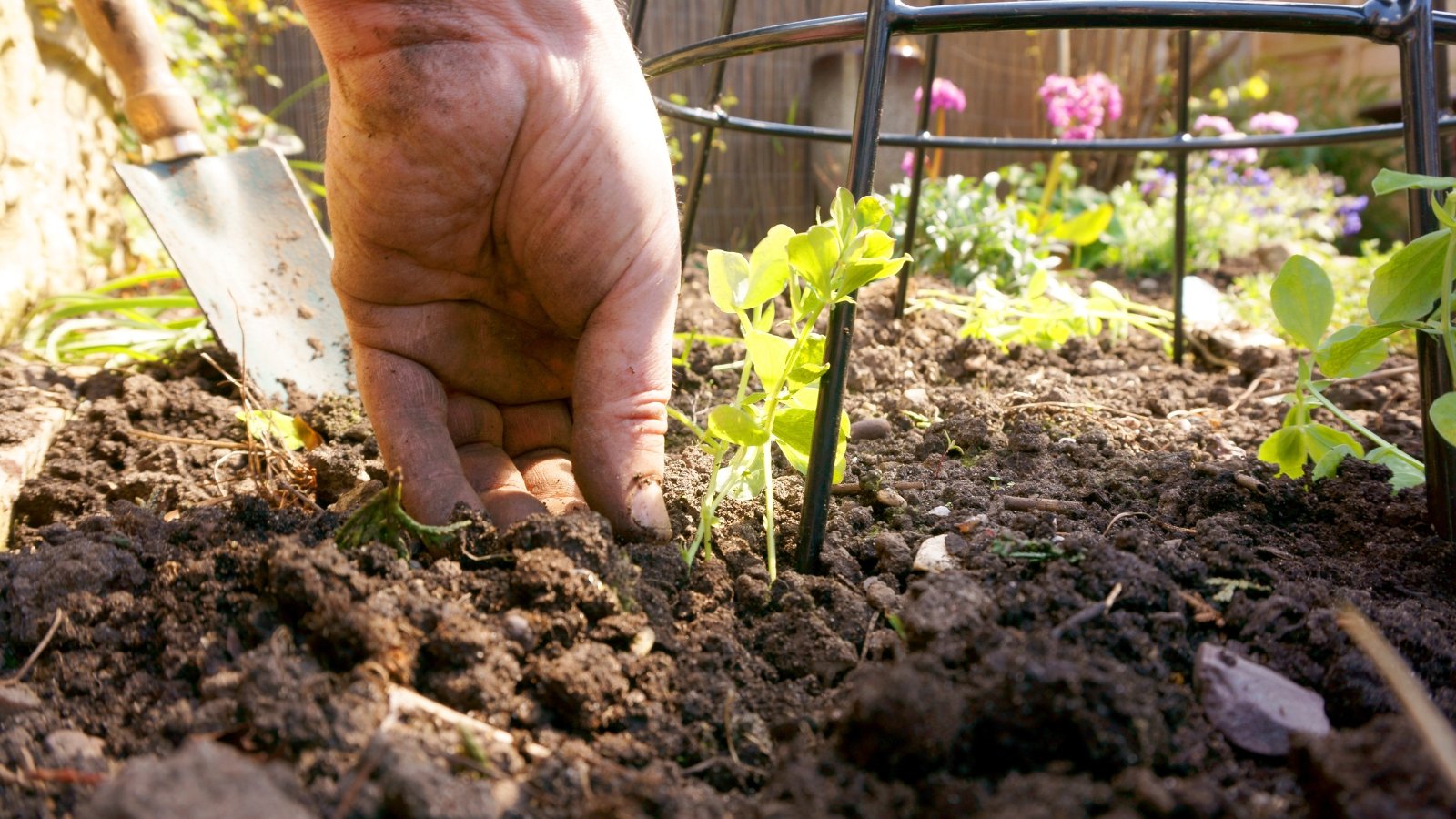
In cool climates, you can plant seeds as soon as the ground is workable. Because of their cold tolerance, waiting for the last frost date is unnecessary. The shoots will tolerate quite cold temperatures, though the flowers won’t survive a frost.
In warm climates, so seeds in the fall for winter blooms. In Zones 8 and higher, this is the ideal growing time. If you try to grow them in spring, you’ll have a short growing season, as they flower best between 45-68°F (7-20°C). Once temperatures rise above their range, they will begin to fade.
Growing from Seed

You can start your seeds indoors or directly sow, though we recommend the latter. The substantial seeds will develop strong root systems this way. The seeds need darkness to germinate, so plant them at a depth of one inch, with a group of three seeds every six inches.
When your seedlings reach six inches tall, thin the plants to one every six inches, select the strongest shoot, and gently remove the others. They benefit from pinching at about the same time, as this encourages branching. You’ll end up with bushier plants and more flowers by doing so.
How to Grow
They are not difficult to grow as long as they have the right conditions. The most important factor in their success is adapting them to your climate. It’s better to plant too early than too late. Otherwise, they enjoy a long growing season and provide a bounty of blooms.
Light
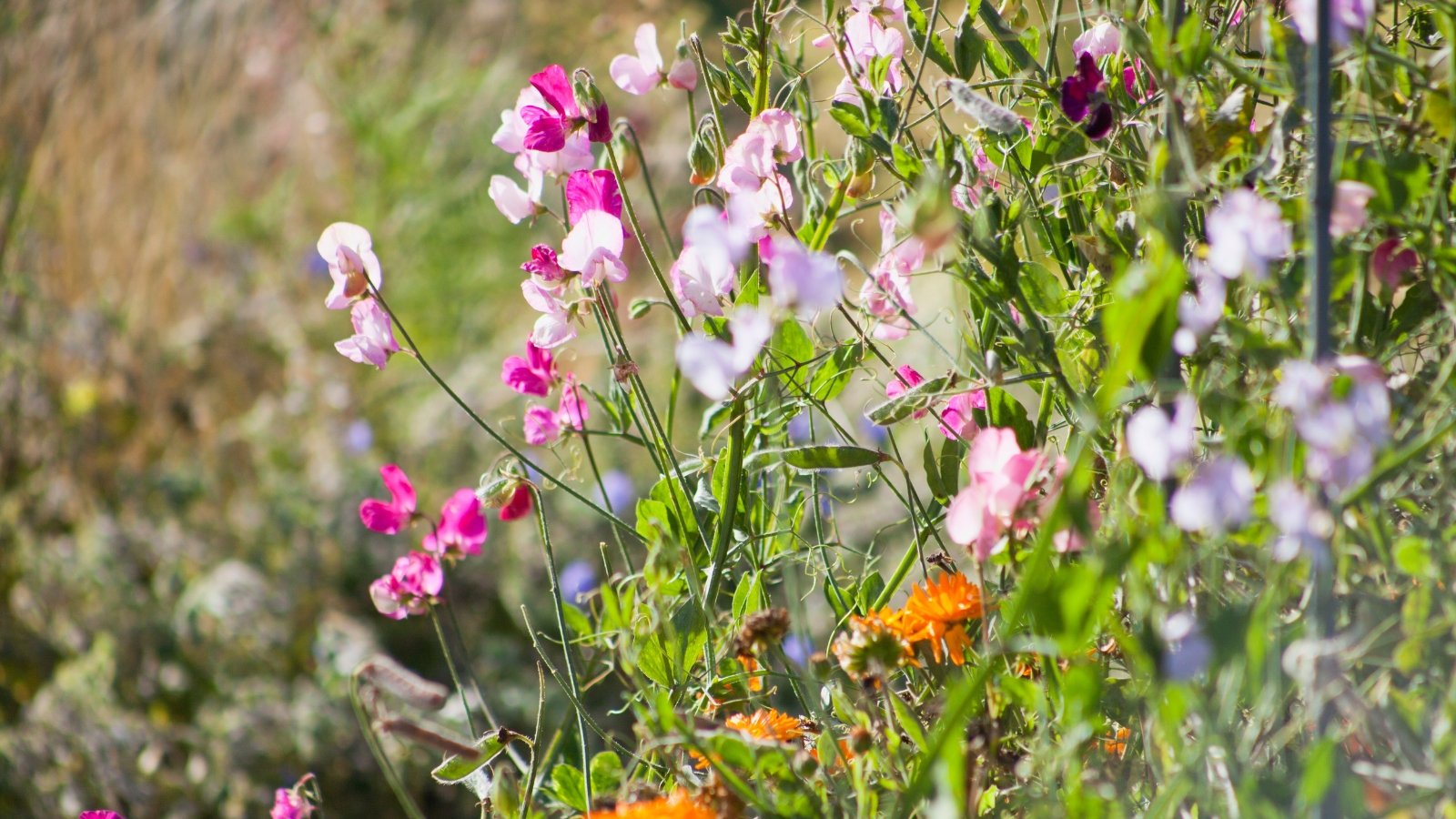
For the greatest blooming power, plant your ‘Winter Elegance’ sweet peas in a spot that receives full sun exposure. This means at least six hours of direct sun daily. The exception to this is in very warm climates, where they will benefit from some protection in the afternoon.
Giving them afternoon shade in Zones 8 and higher will prolong the growing and, therefore, the blooming season. You may even extend the blooming season to the end of spring this way. If you can, plant something at their feet to afford them some shade there. They are happiest with cool, moist roots.
Water
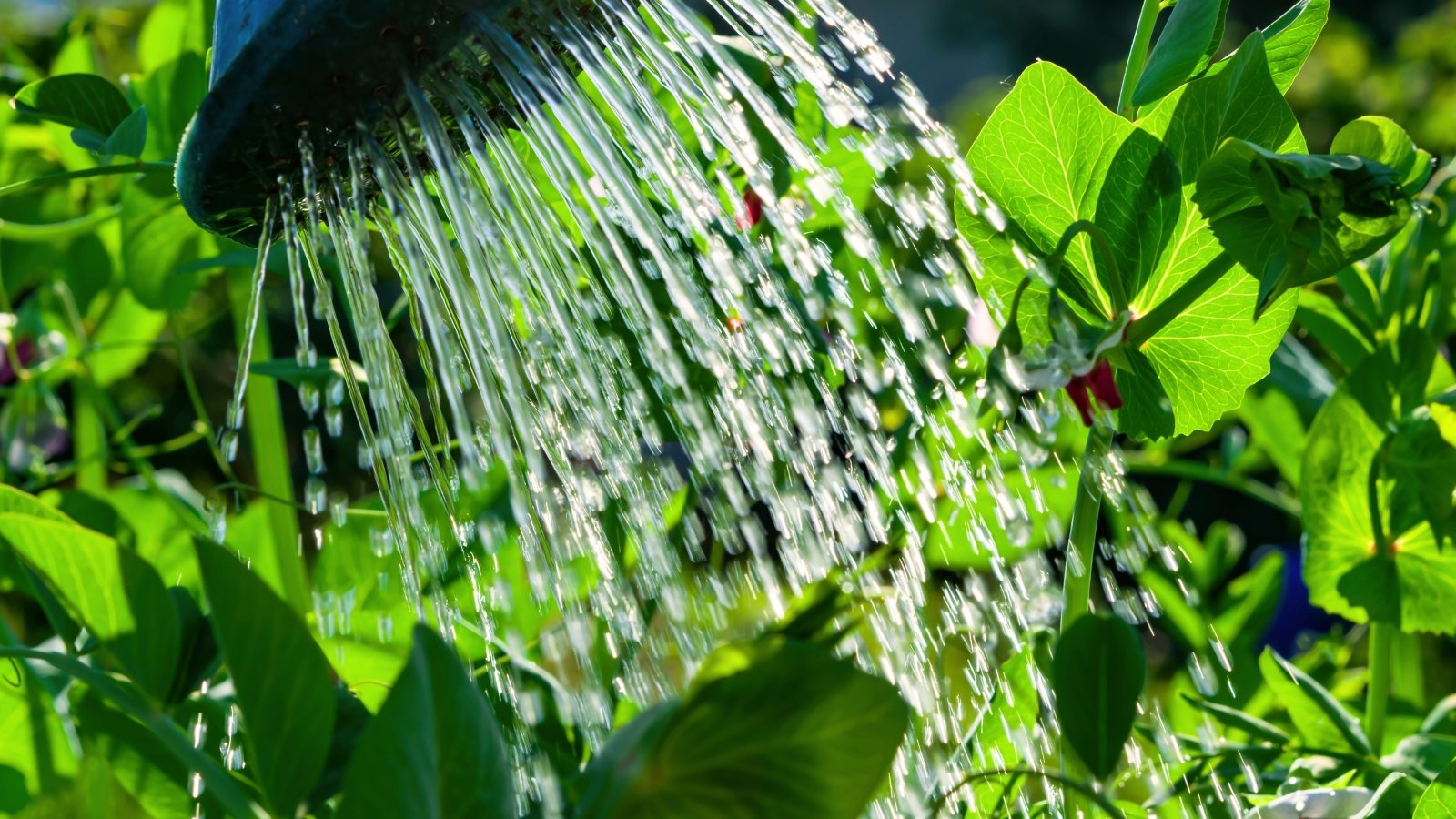
Give your plants ample and consistent moisture. They love moist soil. Be careful not to keep the soil soggy, though, as wet feet will quickly turn to root rot. While your plants are young, water them every one to two days. Once established, ease off to once or twice weekly, more during warm spells or dry periods.
Soil
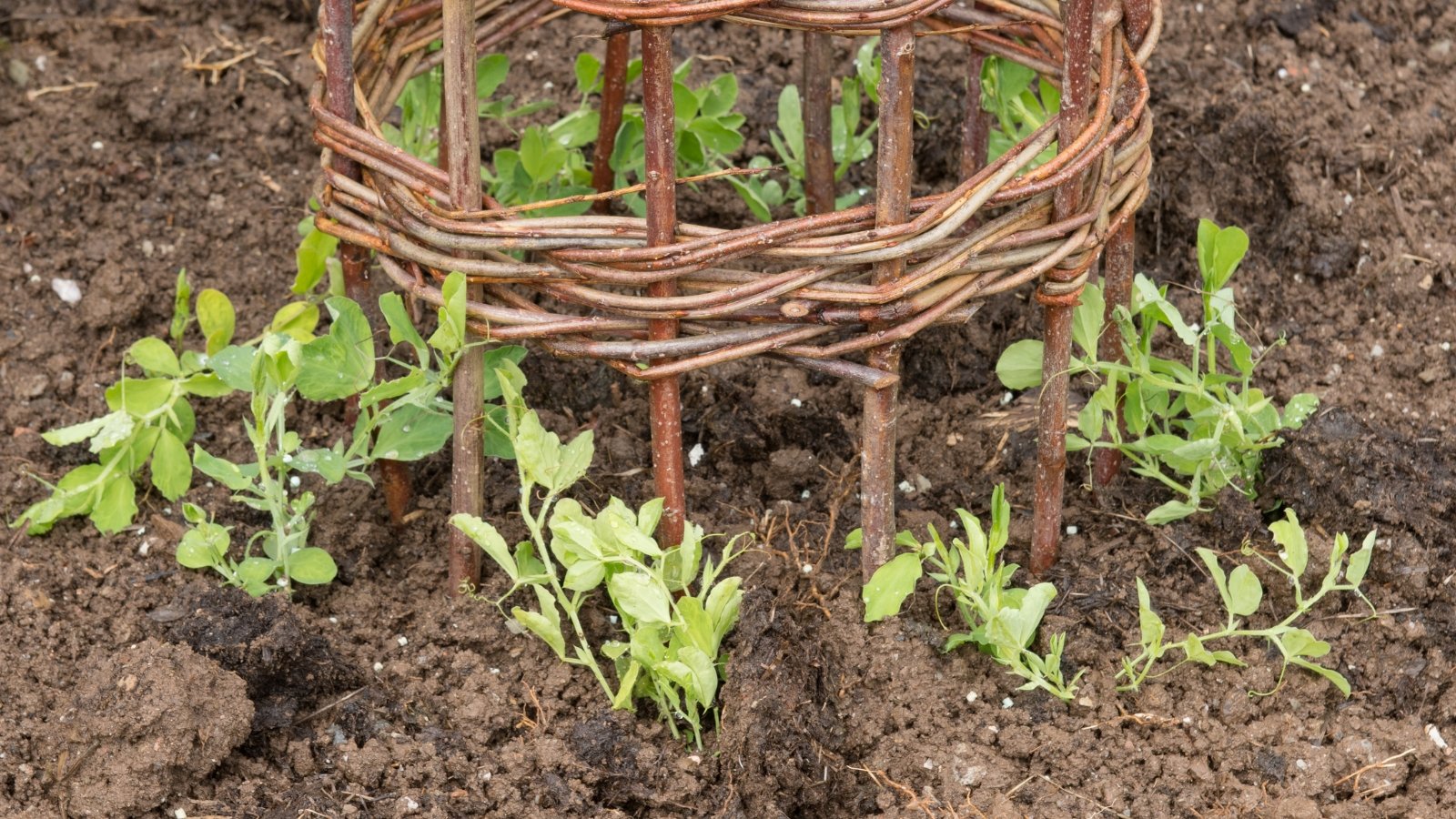
Because they prefer a significant amount of moisture but don’t like wet soil, drainage is important. These plants are not especially worried about soil composition. They will appreciate looser, fertile soil, so if you have sandy or clay-heavy soil, it will benefit them to mix in some compost.
Loose soil supports root development. Keep in mind that they prefer neutral to slightly alkaline soil, so don’t overdo it with organic material. If you have compacted soil, you can work in some coarse sand, along with your compost, to prevent overly acidic soil.
Temperature and Humidity
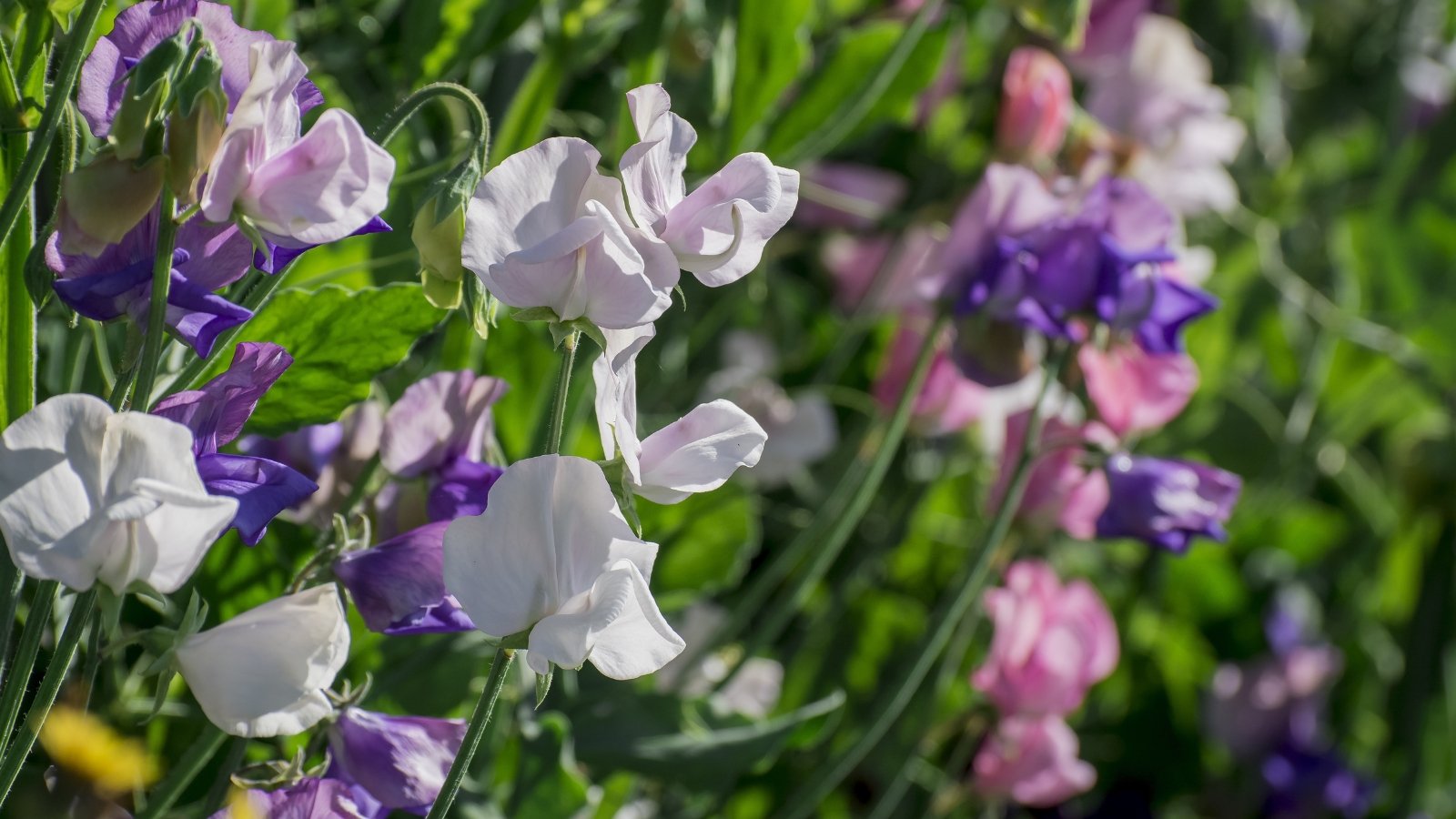
The general range for ideal growth is between 32-60°F (0-16°C). The vines tolerate frost and even a hard freeze when they are young, but the flowers will die in a freeze. This is why it’s best to wait until about a month before the last freeze to plant in cold climates and fall in warm climates.
Sweet peas are moisture-loving plants accustomed to the humid conditions of the Mediterranean cool season. They perform well in average to high humidity and are not well suited to arid climates.
Fertilizing
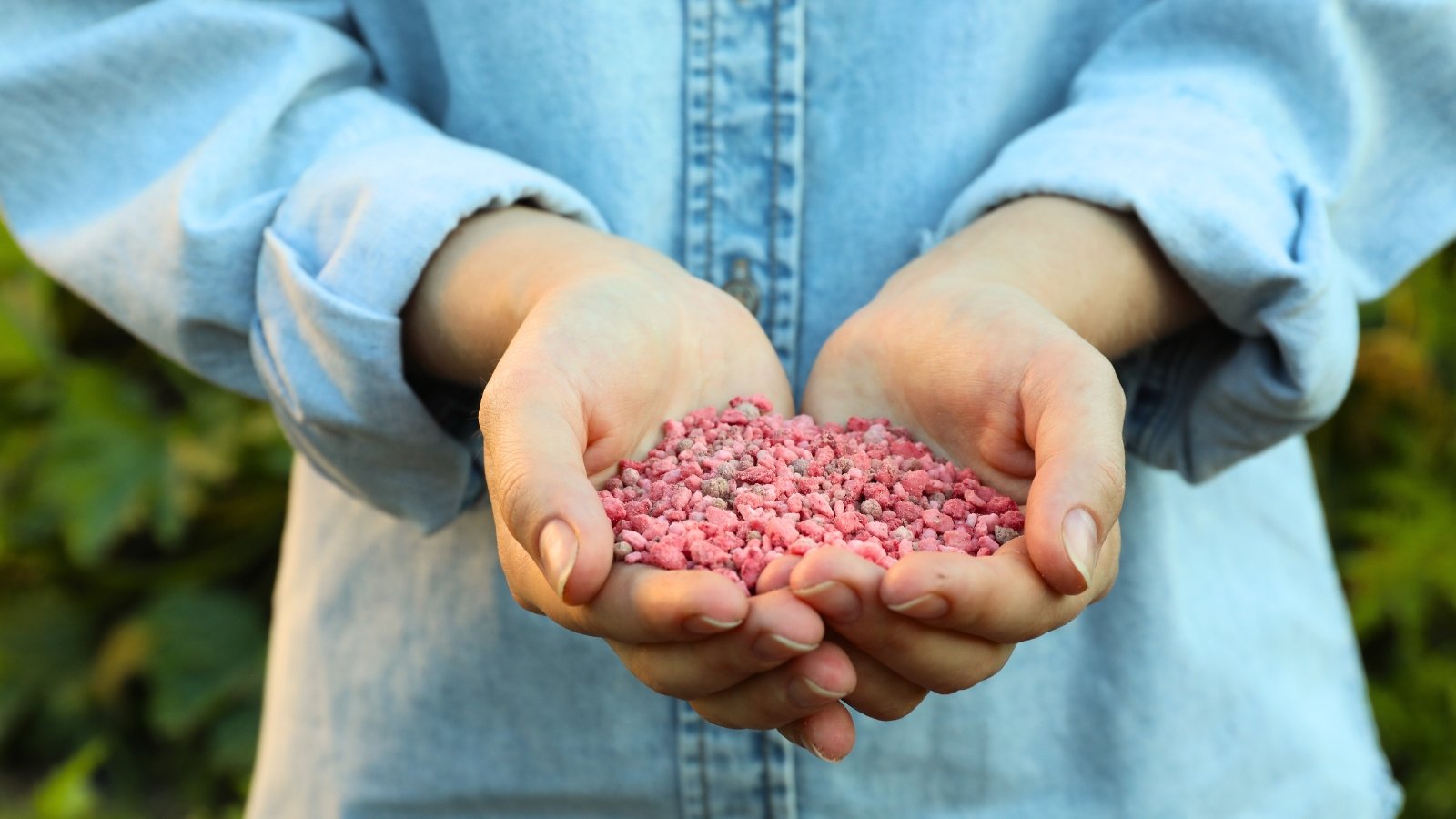
Sweet peas are fairly heavy feeders and will use the nutrients you give them. The type of fertilizer that will produce the ideal growth and flowering will shift throughout the season. Mix in a balanced fertilizer at planting time to give them the strongest start.
As they get close to blooming time, give your plants another application of fertilizer. This time, use a higher potassium formula to support robust flower production. Giving too much nitrogen at this time will cause more green growth and less energy applied to flowering.
Sweet peas are members of the Fabaceae family and are nitrogen-fixing plants. They draw much of the nitrogen they need from the air. A great quality of these plants is that they help enrich the soil with nitrogen for the next season’s inhabitants.
Maintenance
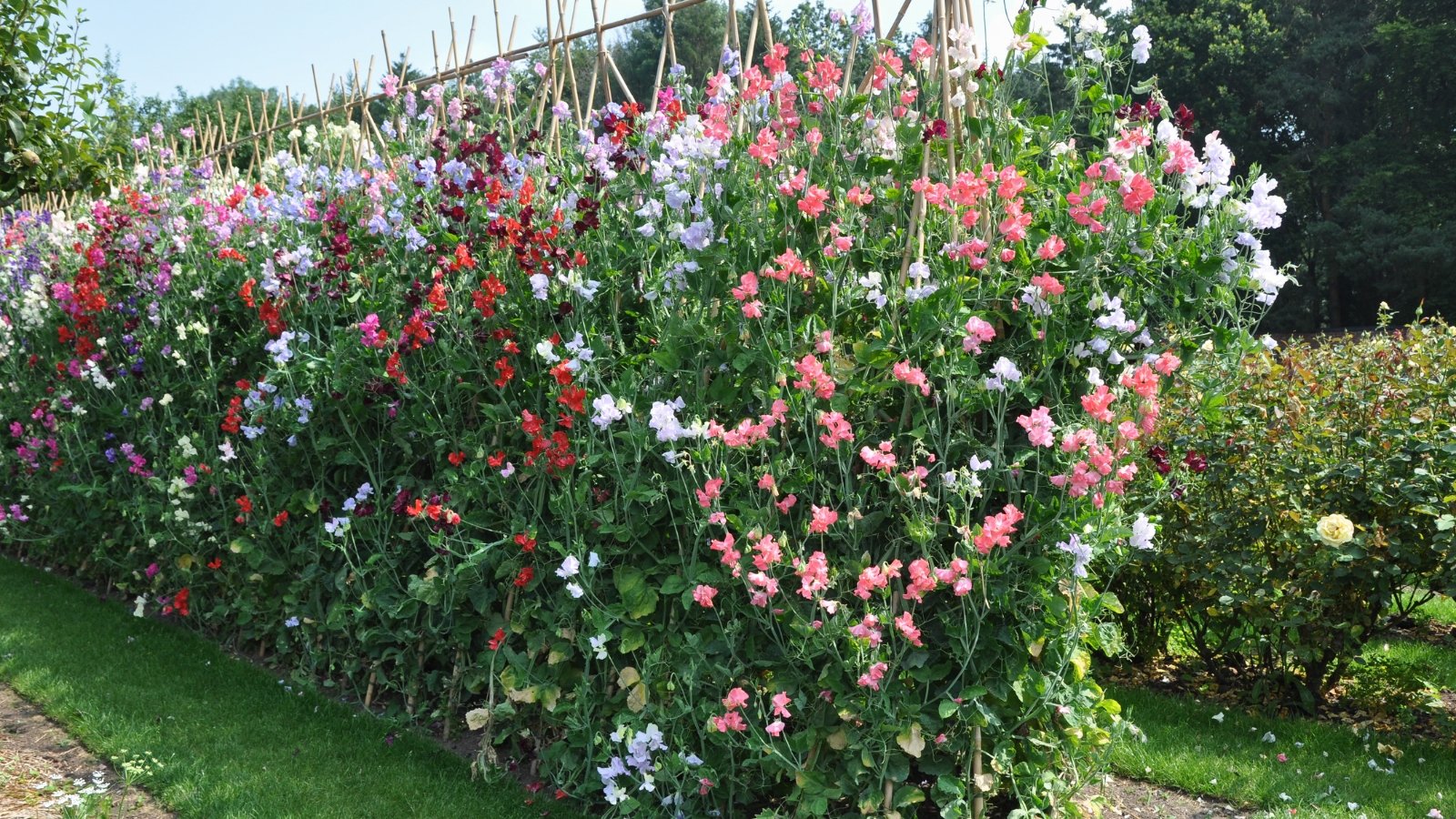
Because they are vining plants, sweet peas require some type of support. A trellis is a good solution, or if you are growing them for cutting purposes, consider T posts. String them with floral netting. These are rapid growers that will send out tendrils to cling to supports.
Pinching your seedlings when they are young will encourage branching and create bushier plants. This means more flowers, so wait until the shoots are about six inches tall and pinch them. Do this by removing the top set of leaves and pinching just above the next pair of leaves down.
The exception to this is, in some cases, with fall sowing. If you plant close to your first frost date, don’t pinch, as the new growth can die back. A light frost will serve this purpose for you, creating branching without dying back.
Deadheading or cutting is imperative to keep your sweet peas blooming all season long. Flowers left on the plant will go to seed, signaling to the plant that its season is drawing to an end. In this way, they are higher maintenance. Harvesting or deadheading will often help them produce the maximum number of blooms.
Propagation
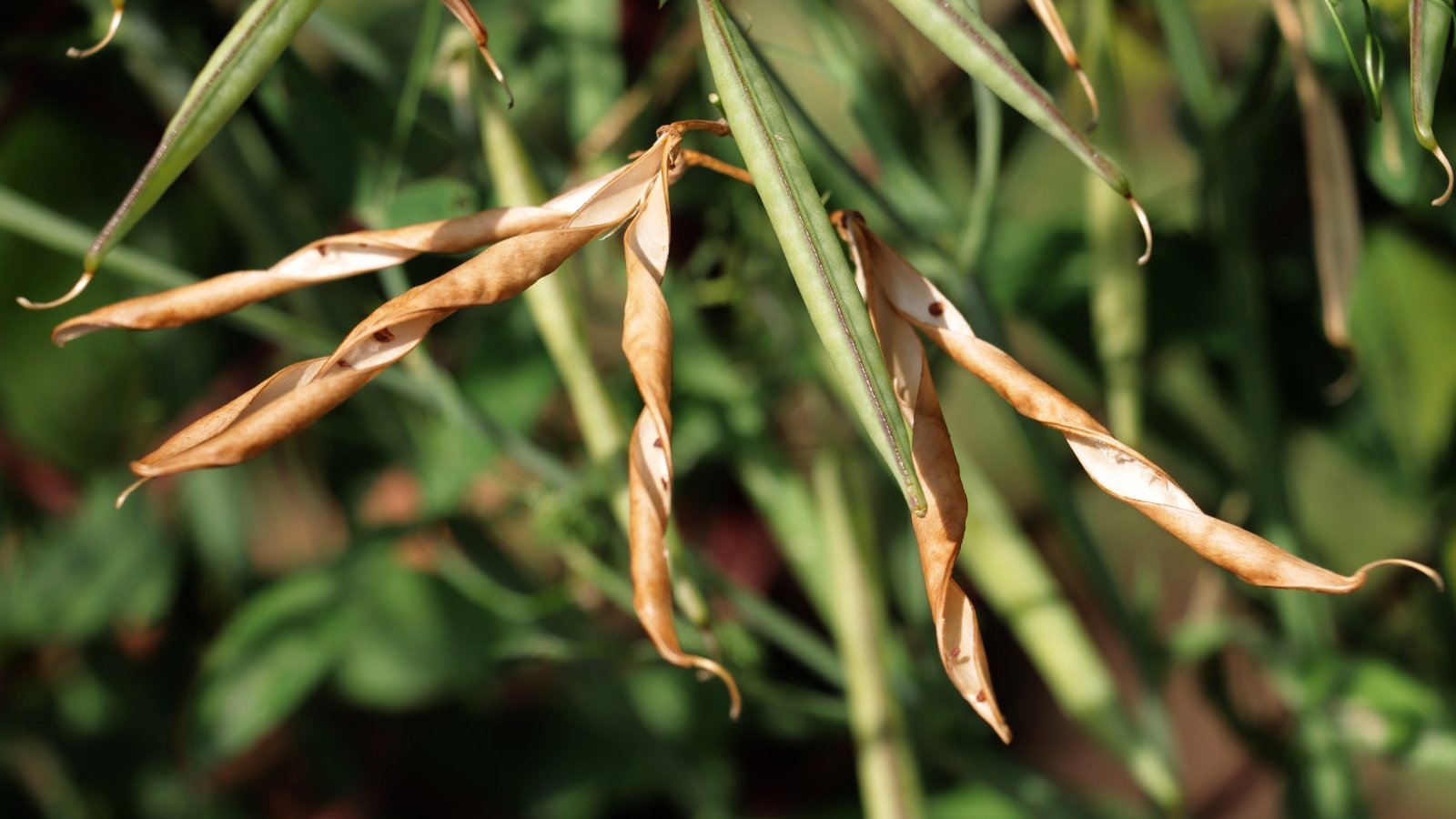
Sweet peas are most commonly propagated from seeds as annuals. As the season draws to a close, allow your final flowers to remain on the vine and go to seed. Collect the mature seeds and store them during the summer in a cool, dry space to prevent sprouting.
Common Problems
Sweet peas are not without their issues, as there are a number of pests that like to feed on them and a few diseases to watch out for. Proper watering and good air circulation are important for preventing these issues.
Pests
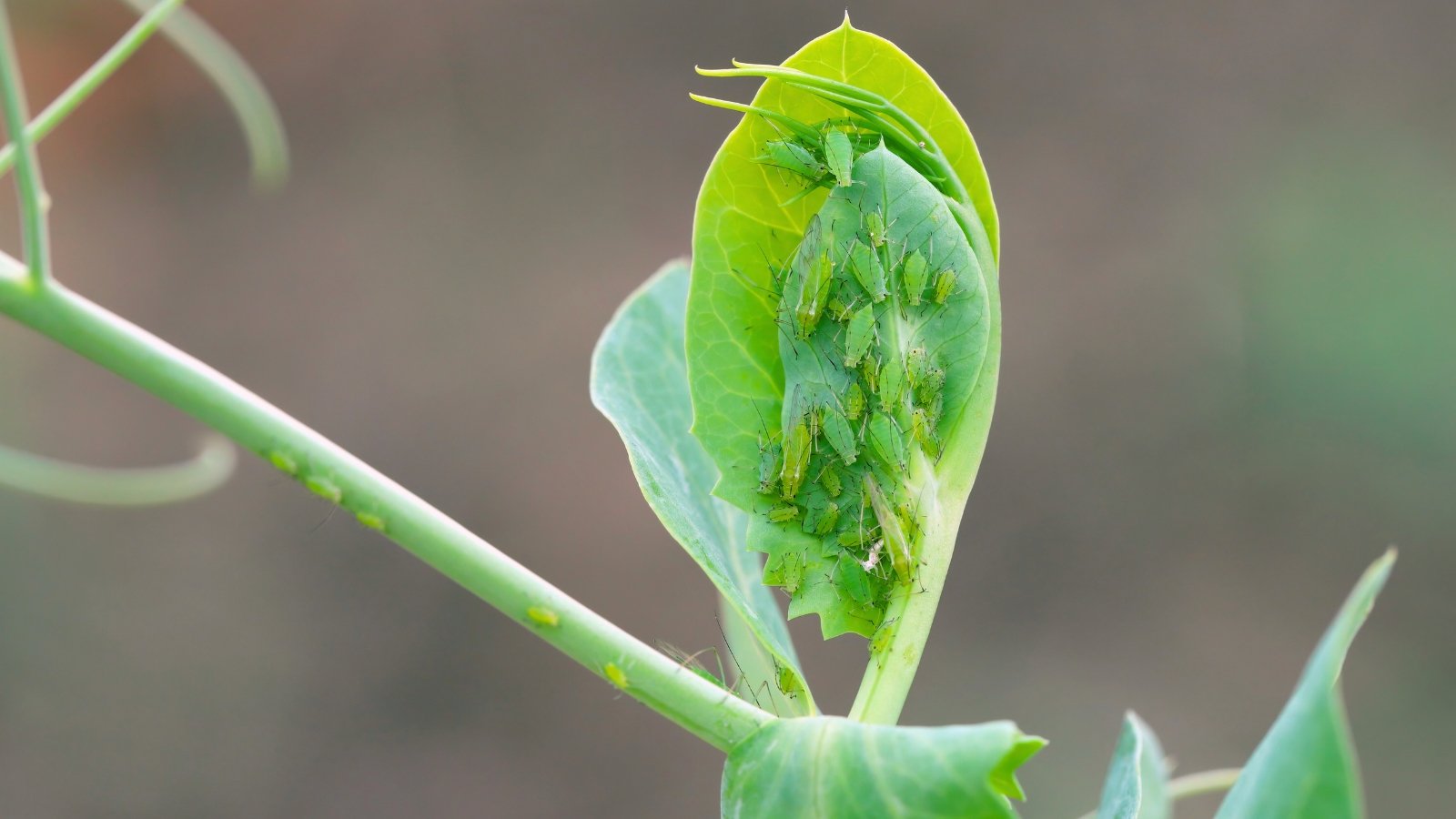
Their tender stems and leaves and wonderful-smelling flowers make sweet peas a target for several garden pests. Aphids, thrips, and spider mites are all fond of the sap from these annuals. These insects pierce the plants’ tissues and drain them of nutrients that are important for growth and flowering.
On top of stealing nutrients, these pests leave behind a sweet, sticky excrement called honeydew. A nice name for something that’s not so nice at all. The honeydew stays on the foliage, providing an environment where black sooty mold likes to grow. This interferes with photosynthesis, further weakening your sweet peas.
The best defense against insects is a good offense. Keeping them healthy and well nourished will protect them and help them endure any damage incurred. Attracting beneficial insects is the most effective way to keep these populations down without disrupting pollinator populations.
Ladybugs, lacewings, and some wasps are great for this purpose. Keep plenty of nectar plants around to attract these and keep them in the garden.
Young plants are particularly susceptible to damage from slugs and snails. If you see signs of damage, traps—beer traps, copper bands, and commercial deterrents—are effective in eradicating them.
Diseases
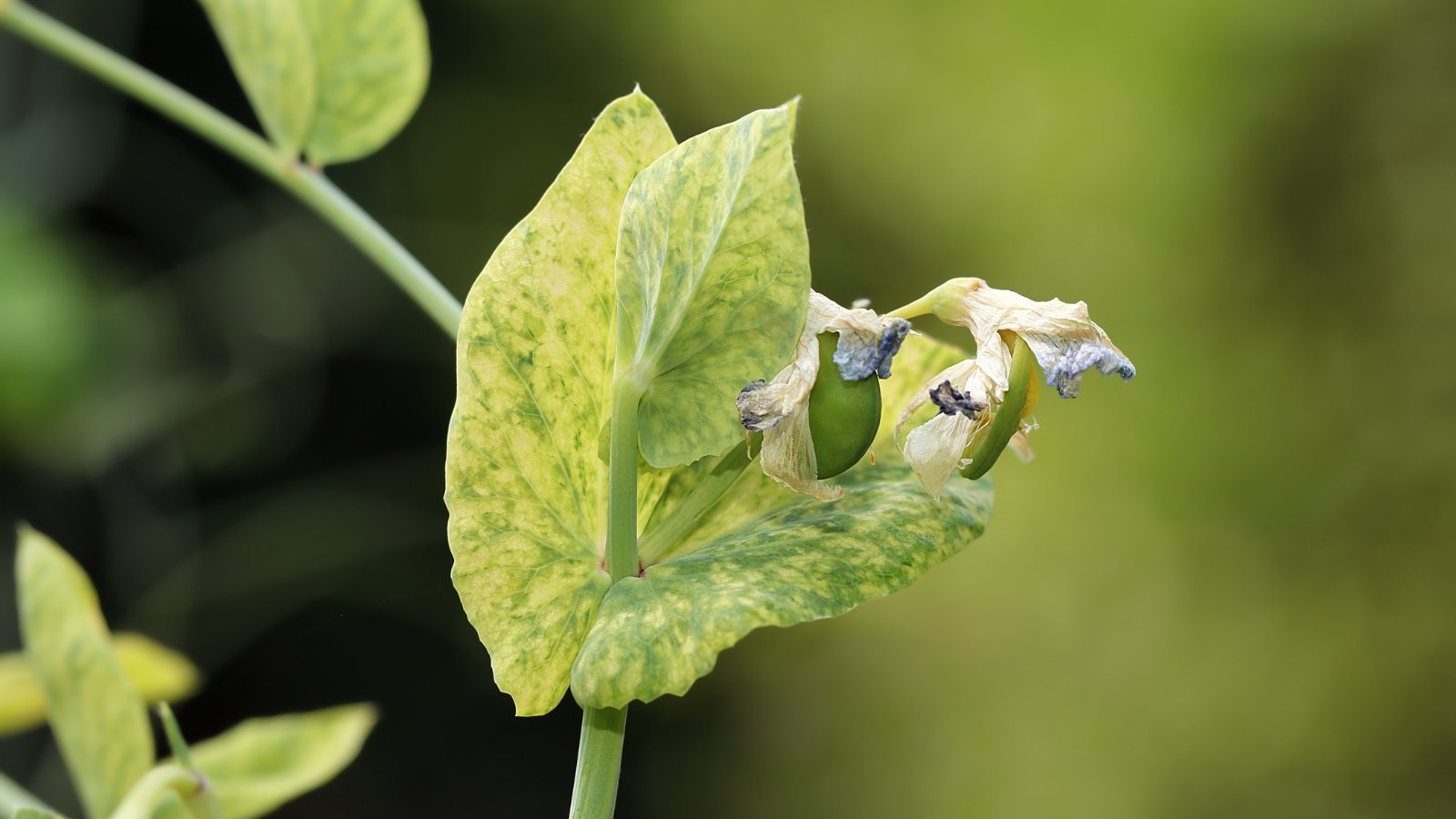
Their high moisture preference makes sweet peas more susceptible to fungal issues. Root and crown rot can be a problem if the soil doesn’t drain properly. Any rotted plants should be removed from the garden and disposed of. Let the soil dry out completely before planting in it again, and opt for rot resistant plants next season.
Powdery mildew is another common issue, which, similarly to black sooty mold, can interfere with photosynthesis. Maintaining good airflow around your vines is another valuable preventative. Remove any moldy or mildewed leaves to contain these issues.
Some viral diseases can also affect your sweet peas. Most don’t kill the plants and can leave discoloration that some gardeners find attractive. Others can be destructive, killing the plant and infecting others nearby. It’s important to pull these plants and dispose of them away from others.
Keep infected plants out of the compost pile and dispose of them away from others. Solarization is an effective way to clear the soil of many viral diseases. By harnessing the power of the sun, heating the soil kills the viruses, leaving the soil more hospitable for plants in the next season.
Frequently Asked Questions
They make great neighbors for many plants, especially lower-growing ones, which will cover the soil, protecting and shading their roots.
No, they are poisonous to pets, and you should keep them away from curious fur friends.
No part of the sweet pea plant is edible, with their seeds being the most toxic part. As pretty as they are, don’t eat them or use them to decorate food.
